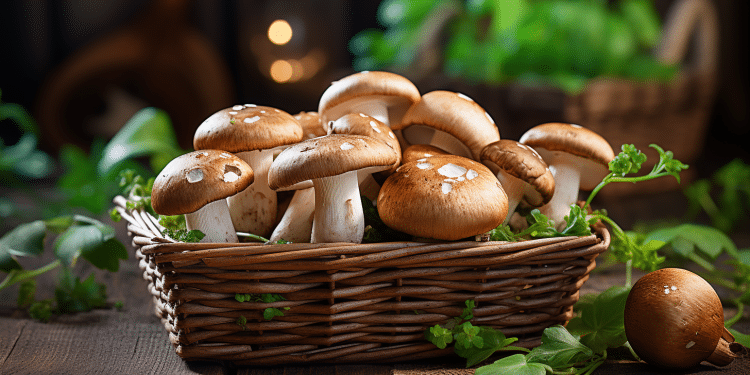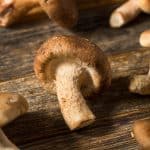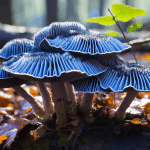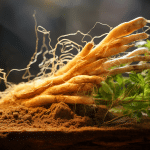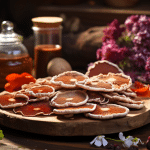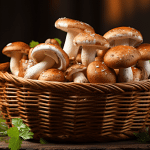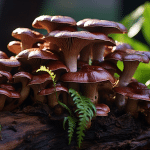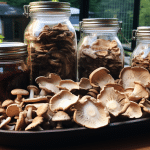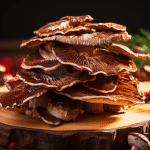Mushrooms are great for you! For instance, mushrooms are also good sources of vitamin D, B vitamins, niacin, selenium, copper, and pantothenic acid. So, they help to fill in the gaps of nutrients that are found in plants, grains, and meat.
There are many different types of edible mushrooms. They all have their unique textures, shapes, flavors, and nutrition profiles.
Mushrooms may even be considered adaptogenic foods. This means they can help your body cope with different types of stress, as well as helping promote regular physical functioning. Many species of mushrooms, such as chaga and Lions Mane, can be used to help strengthen the immune system. Mushrooms are also packed with antioxidants, and they can even have anti-aging properties.
Learn more: How to use mushroom powder
The compounds contained in mushrooms are excellent at neutralizing free radicals, which are molecules that can do serious damage to your body and cause cancer and other unpleasant diseases. Even dogs can enjoy mushrooms as part of their healthy diet. Learn what mushrooms are safe for dogs to eat. In fact, button mushrooms are even better than vegetables such as green beans, tomatoes, carrots, and bell peppers in terms of their antioxidant levels. The best part is, the antioxidants found in mushrooms are not destroyed or inactivated during cooking.
Easy Ways To Add Mushrooms To Your Diet
If you are interested in reaping the many possible health benefits mushrooms provide, there are plenty of ways you can incorporate them into your diet. You can purchase mushroom teas, supplements, or get them in other pharmacological forms. But preparing food with them yourself is a far more satisfying experience! Why not make some nutritious meals for yourself and your family, and at the same time, reap the many health benefits mushrooms have to offer.
Most types of mushrooms can be sliced and sautéed with a little oil or butter, and have low carbs, making them keto-friendly. You can also throw them into stir-fries just like you would any other veggie. Or, you can replace some of the ground meat with them in a lot of recipes. Some mushrooms, such as enoki, are also good to eat raw, and you can throw some into salads.
If you do not want to buy fresh mushrooms and risk having them spoil before you have the opportunity to use them, you can get dried mushrooms as well. You can easily re-stir the dried mushrooms with a little hot water, then throw them into casseroles, soups, or any number of other recipes. The water in which they are immersed can be used to give some additional flavor to rice, soup, or stew, or used to create a gravy.
Learn more: Keto friendly mushrooms
How to Grow Your Own Edible Mushrooms
If mushrooms in the local grocery store look a little pricey to you, or if they are lacking in variety, there are some other options. You can forage for wild mushrooms, or you can try growing your own mushrooms. Wild mushrooms can be an excellent treat, but I would strongly recommend not trying to forage your own mushrooms unless you know what you are doing. There are a lot of toxic mushroom species that look very similar to a lot of the popular edible varieties.
Sometimes, only a specialist can distinguish between them, which is why I would not risk it. There is an old adage that says that there are only two types of mushroom hunters. There are the brave ones, and the old ones, but the old brave mushroom hunters do not exist.
In other words, taking risks does not generally pay when foraging for wild mushrooms. The good news is, growing mushrooms yourself is an awesome alternative. There are kits that you can purchase which makes the process very simple.
In some cases, you only have to spray your containers with water a couple times per day, and within just a couple weeks, you should have a batch of fresh, tasty mushrooms all of your own.
What Are The Types of Edible Mushrooms?
There are more than 2000 species of edible mushrooms. But there are only a few that are grown and sold commercially, at least in our part of the world.
The most prevalent type of mushroom is, by far, agaricus bisporus. This species includes the white button mushrooms, cremini mushrooms, and portobello mushrooms. Most people are familiar with this kind of mushroom on pizzas or in pasta sauces.
These mushrooms are sold at almost any supermarket and produce section in the grocery store. According to the U.S. Department of Agriculture, the average American consumes just under 3 pounds of fresh white mushrooms each year. Oyster mushrooms and Shiitake mushrooms are likely the next most common types of edible mushrooms. You may not find them at every grocery store, and you are likely to find them most often at Asian markets.
You may sometimes find small, roundish enoki mushrooms on sale too. Some of the more delicious edible mushrooms include morel mushrooms, chanterelles, and truffles. But sadly, these mushrooms are extremely hard to grow commercially, so you will hardly ever see them at the stores. If you are lucky, you can probably find them at your local farmers market during their seasons. Otherwise, you are probably going to have to have a friend who is an experienced mushroom forager if you want to try any.
Are Mushrooms More Sustainable Than Vegetables?
If you are an environmentalist, then you are likely paying a lot of attention to where your food comes from. Eating local, and supporting sustainable farming, is becoming increasingly popular. Mushrooms are actually a very sustainable food choice.
Mushroom farms are able to reclaim byproducts like crushed up corncobs, cocoa shells, peanuts, and soybean shells from other agriculture industries, or even trash such as coffee grounds from cafes. These materials create a nutritious substrate for mushrooms to grow on, that would have been wasted otherwise. Once the mushrooms are done growing, the spent substrate can be composted, creating an excellent soil amendment, that also has the advantage of adding in the fungals.
Because commercial mushrooms are grown almost exclusively in enclosed spaces, they require far less space on land than traditional crops. Growers are able to control environmental factors more closely in this environment, saving water usage and other energy needs. Modern mushroom farms are highly energy-efficient, with very little carbon footprint when compared with traditional farming. Some mushroom farms even use heat generated by their composts to warm their facilities!.
Since mushrooms only last for a short time, they are not very good for transport. So most mushrooms that you will find at stores are grown locally, rather than being shipped in from another continent, as is the case with certain fruits and vegetables.
